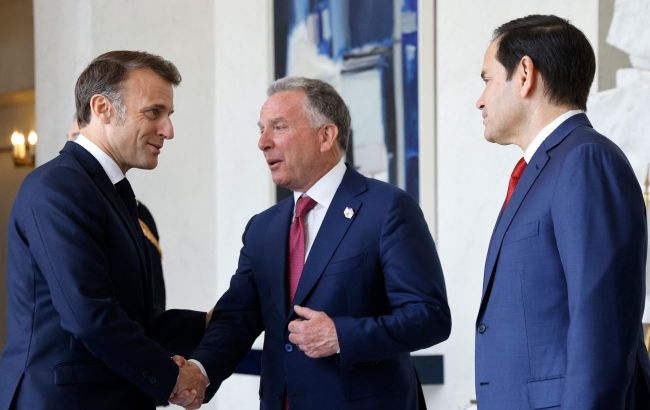Crimea, NATO, sanctions: Reuters finds out difference between US and EU peace plans
 Photo: talks in Paris on April 17 (Getty Images)
Photo: talks in Paris on April 17 (Getty Images)
European and Ukrainian officials this week pushed back against some US proposals on how to end Russia's war in Ukraine. They put forward counter-proposals on issues ranging from territory to sanctions, Reuters reports.
The packages of proposals were developed during talks between US, European, and Ukrainian officials in Paris on April 17 and in London on April 23.
The main differences in the two texts concern the sequence of resolving territorial issues, lifting sanctions against Russia, security guarantees, and the size of the Ukrainian armed forces.
The documents seen by Reuters show these differences in full and detailed form for the first time.
The first text reflects the proposals conveyed by Trump's envoy Steve Witkoff to European officials in Paris, which were in turn passed on to the Ukrainians. US Secretary of State Marco Rubio characterized the proposals as a broad framework to identify differences between the parties.
A second text emerged a week later as a result of talks between Ukrainian and European officials in London and was passed on to the American side, sources said.
President Volodymyr Zelenskyy said the document with the proposals developed during Wednesday's talks in London is now on Trump's desk.
Comparison of documents
In terms of territory, Witkoff's proposals included legal recognition of US control over Crimea, a Ukrainian peninsula that Moscow seized in 2014, as well as de facto recognition of Russian control over areas of southern and eastern Ukraine controlled by Moscow forces.
In contrast, the European and Ukrainian document postpones detailed discussion of territory until a ceasefire agreement is concluded, and the document does not mention the recognition of Russian control over any Ukrainian territory.
Concerning Ukraine's long-term security, the Witkoff document states that Ukraine will have a credible security guarantee with European and other friendly states acting as guarantors. No further details are given, but it is stated that Kyiv will not seek to join NATO.
The competing document is more specific: it states that there will be no restrictions on Ukrainian forces and no restrictions on the deployment of military forces by Ukraine's allies on Ukrainian territory.
It offers strong security guarantees for Kyiv, in particular from the United States, through an agreement like Article 5, which is a reference to NATO's mutual defense clause.
In terms of economic measures, Witkoff's proposals state that sanctions imposed on Russia since the occupation of Crimea in 2014 would be lifted as part of the agreement under discussion.
The counterproposals state that sanctions will be gradually eased after a sustainable peace is reached and that sanctions could be reinstated if Russia violates the terms of the peace agreement.
The European and Ukrainian document also proposes that Ukraine receive financial compensation for the damage caused by the war from Russian assets abroad that have been frozen. Witkoff's text only states that Ukraine will receive financial compensation, without specifying the source of the money.
US President Donald Trump insists on concluding a peace agreement with Ukraine soon. He has not yet made public the details of his plan, but promises to do so shortly.

